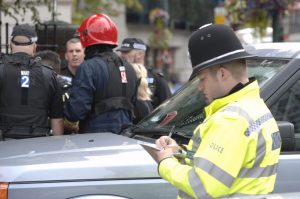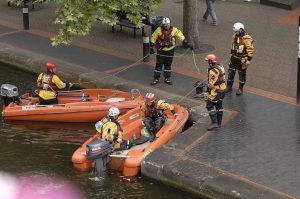Bodies and Affects as Security Devices in and amongst Complex Emergencies
This blog has been published by Nat O’Grady, Lecturer in Disaster Management. The blog coincides with his recent publication, ‘Designing affect into security: shared situational awareness protocols and the habit of emergency response‘.
In the strategies and rationales of governments across the world, emergencies are imagined increasingly by their complexity. Whether flooding or drought, fire or snowstorms, the consequences of emergencies get articulated across multiple, interrelated registers simultaneously: from their effects on human experience, to how they impact upon various infrastructure and their ramifications for the capacity of ecological systems to strive in the future. The reasons said to underpin the occurrence of emergencies, furthermore, now challenge conventional renditions of causation, with cause and effect understood to be trapped in non-linear exchange with one another. Causes become effects and effects causes as the event unravels in real time. Amidst such complexity, in what ways are the bodies of first responders, as physical entities bearing the capacity to act but also make sense of their surroundings, mobilised in strategies of security? Further still, how does the enrolment of bodies rebound to reflect the geopolitics of emergency response and security more generally?
In my latest paper for Cultural Geographies, I try to respond to these questions by bringing into dialogue two issues that I think are crucial if we are to better understand how emergencies are secured where governments think of them through the lens of complexity. Firstly, I engage with theories of affect that, for the last two decades, have been circulating across debates particularly in geography and cultural studies in a bid to get to grips with how our bodies are shaped by, and actively reshape, the situations they live within. I draw upon theories of affect, secondly, to investigate the development of a set of protocols that seek to guide emergency response by what is called shared situational awareness- a kind of hive-mind state wherein authorities, often scattered disparately across space and possessive of different perspectives, come to operate with consensual understandings of the unfolding of emergencies.
Rather than probing how, and if, they are followed on the ground, the research in the paper focused on how shared situational awareness protocols are designed by emergency planners. Looking into design as a motif allowed me to probe the dreams and ideals that emergency planners and government officials have for shared situational awareness and how it might enhance response to emergencies figured as complex. Design also opened up to consideration the contingencies envisaged by government officials that, during an emergency, might disrupt shared situational awareness and, in a sense, how such contingencies might be inscribed as a precautionary measure into the design of protocol itself.
Enveloping the capacities of responder bodies into the protocols that themselves guide response, I argue that planners seek to establish ‘emergency response habits’. The notion of habit has a substantial tradition in cultural geography. Rather than describing idiosyncratic actions that an individual repeats ad infinitum, scholars like Elizabeth Gross, Ruth Raynor, David Bissell and JD Dewsbury have conceptualised habit as an iterative phenomenon that continually alters in adaptation to the event-induced circumstances bodies encounter over time, such that ‘each rendition is accretive, building on the last and oriented to the next. Each rendition similar to the former but with new acquisitions introduced each time’ (Bissell and Dewsbury, 2015, 23). Habits, in addition, are not simply acted out but also express ongoing manoeuvres by which we make sense of our surroundings. Instead of taking place on linguistic registers, however, habits exemplify how the body and its capacities for sensorial, non-representational modes of perception form the site upon which such intelligence is enacted. In other words, how embodied states often encapsulated by emotional categories such as confusion, panic or hope, for instance, might be understood as a means by which we seek to make sense of the things happening around us.
I draw upon and extend the concept of habit to demonstrate how shared situational awareness protocols have been designed to instil complex temporal structures into the embodied performance of emergency response; seeking, on one hand, to ensure responder bodies can enact learned courses of action during emergencies whilst, on the other, developing the capacity to improvise in adaptation to the indeterminate volatility that inevitably punctuates an emergency’s unravelling. SSA design seeks also to enable responders to use their bodies so that different authorities across government can operate with a consensually held understanding of the event encountered despite matters of distance, perspective and different modus operandi.
What I hope to have developed through the paper is a more sophisticated rendition of how bodies as non-representational, affect laden processes function as mechanisms deeply engrained within security practices that attend to the necessarily radical uncertainty of emergencies increasingly captured through the nomenclature of complexity.




0 Comments